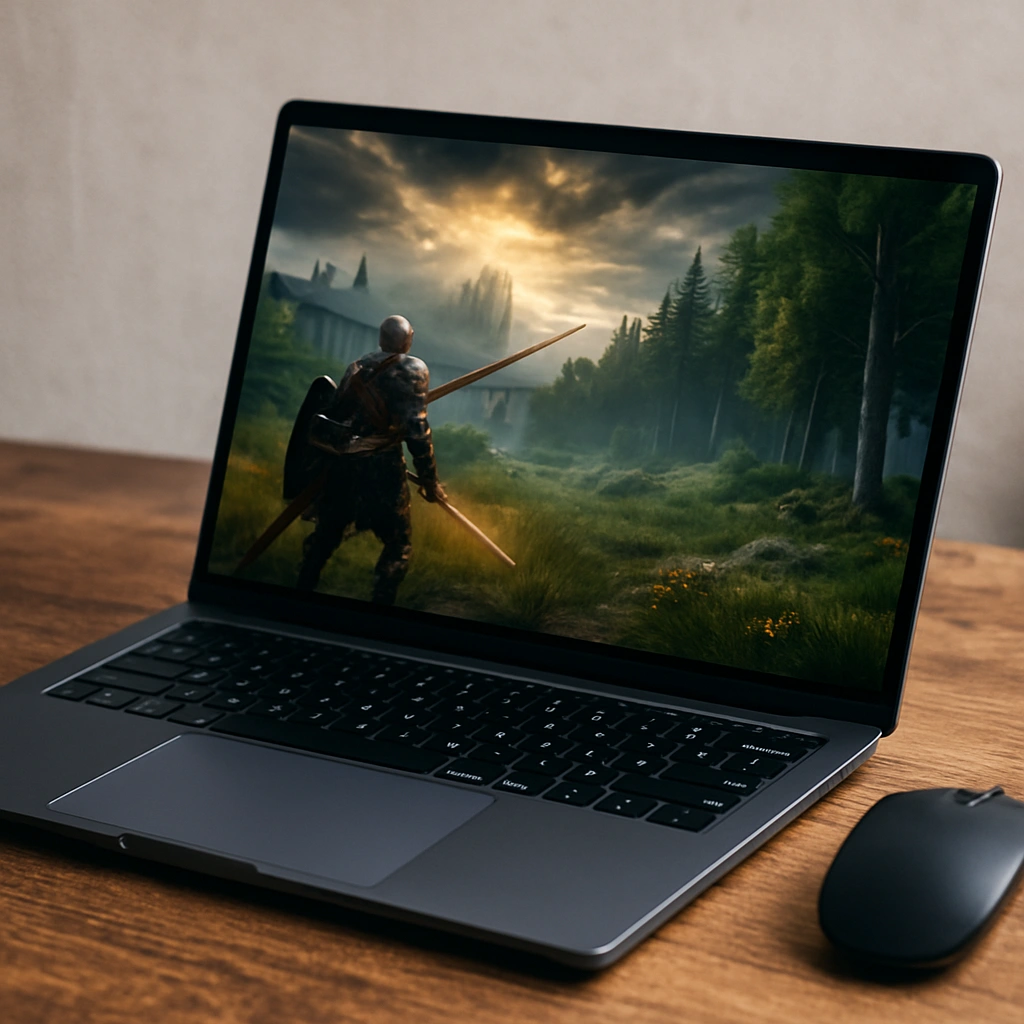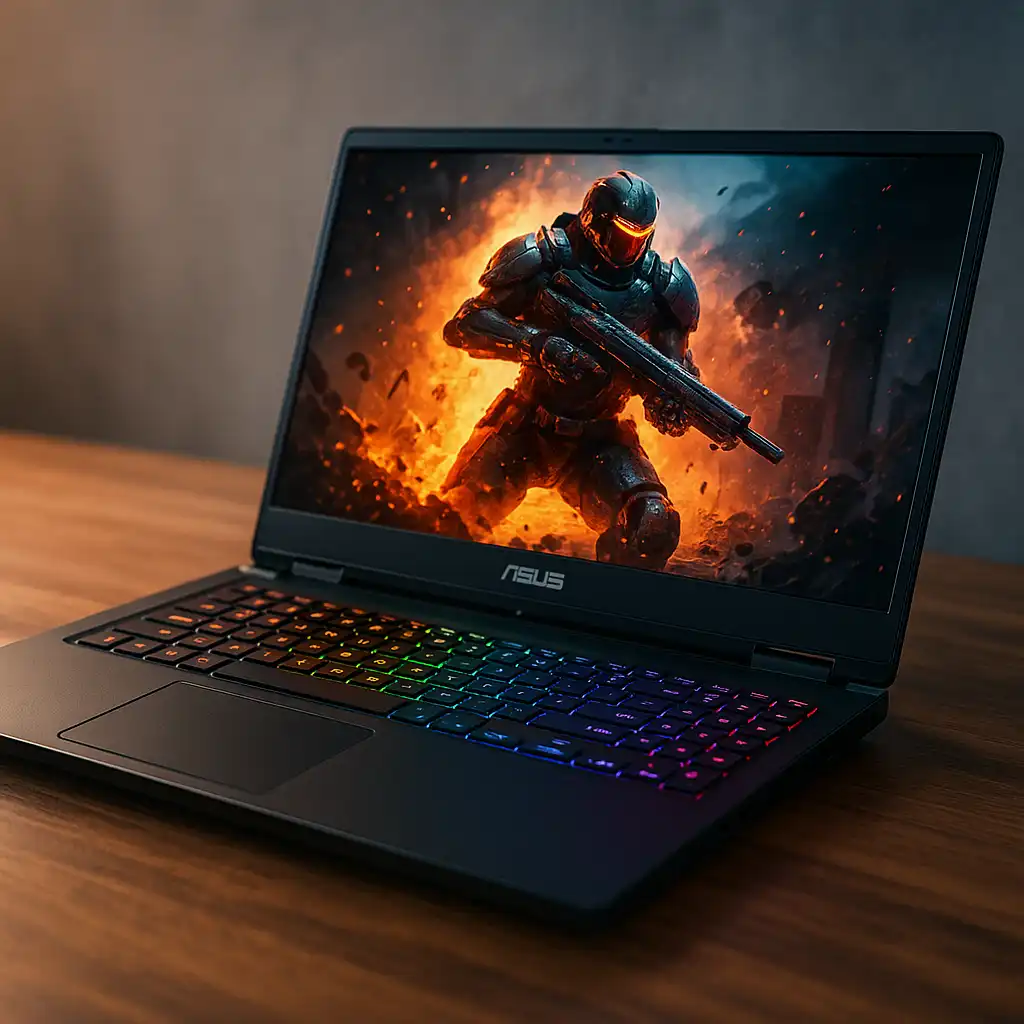Can You Play Games on a Non-Gaming Laptop Even If It’s Not Built for It?
Disclosure: This post contains affiliate links. As an Amazon Associate, I earn from qualifying purchases—at no extra cost to you.
You don’t always need a high-end gaming laptop to enjoy some gaming. Many people use their everyday laptops for work, school, or browsing, but they can also handle light gaming with a few adjustments. Let’s take a closer look at what you can realistically expect if you’re gaming on a non-gaming laptop.
What’s Inside a Non-Gaming Laptop
Non-gaming laptops typically rely on integrated graphics, such as Intel Iris Xe or AMD Radeon Vega. These chips are designed for everyday tasks like web browsing, video streaming, office work, and light photo editing. Most models come with 8 to 16 GB of RAM and processors focused more on efficiency than raw gaming power.
Simply put, these laptops can handle basic tasks well, but they aren’t built for the heavy lifting that modern, graphics-intensive games require.
The Games That Run Well
You still have plenty of gaming options, even without a gaming rig. Many popular titles are lightweight enough to run smoothly on regular laptops. Games like:
- Stardew Valley
- Among Us
- Minecraft
- League of Legends
These games generally perform well as long as you lower the graphics settings. Even some older AAA games like Skyrim or The Witcher 3 can be playable on low settings if you’re okay sacrificing visual quality for smoother gameplay. Based on user experiences, you might see frame rates between 30 and 60 FPS on less demanding titles, while newer, resource-heavy games may struggle or fail to launch altogether.
Simple Tweaks to Improve Performance
You can get better gaming performance with a few easy adjustments:
- Lower your resolution to 720p or 900p
- Turn off graphics features like shadows, reflections, and anti-aliasing
- Close unnecessary background apps
- Set your power plan to High Performance
- Update your graphics drivers regularly
These changes help your laptop run cooler and smoother, reducing lag and crashes during gameplay.
Where Limitations Show Up
There’s a point where integrated graphics can’t keep up. Demanding games like Cyberpunk 2077 or Red Dead Redemption 2 require far more graphics power than non-gaming laptops can provide, even at the lowest settings. In these cases, you’ll likely face lag, freezing, or an inability to play the game altogether.
However, cloud gaming services are becoming a solid workaround. Platforms like GeForce Now and Xbox Cloud Gaming let you stream games over the internet, using remote servers to handle the heavy graphics load. This allows non-gaming laptops to play high-end titles, provided you have a fast, stable internet connection.
When a Gaming Laptop Becomes the Better Choice
For anyone serious about modern gaming, a dedicated gaming laptop makes a big difference. These machines come with dedicated GPUs, advanced cooling systems, and higher refresh rate displays. They’re built for running demanding games smoothly for long sessions without overheating.
If you plan to play the latest AAA games, dive into VR, or want consistently high frame rates and detailed visuals, a gaming laptop is worth the investment.
Quick Tips for Better Gaming on Regular Laptops
- Use a cooling pad to prevent overheating
- Disable unnecessary apps before gaming
- Turn on Windows Game Mode
- Regularly clear storage space to keep performance optimal
Even small habits like these can noticeably improve your gaming sessions.
Conclusion
You can absolutely play games on a non-gaming laptop, especially if you stick to lighter, older, or indie titles. With a few smart tweaks, your everyday laptop can deliver a fun gaming experience. But if you’re aiming for high-end graphics, smooth performance, and modern releases, a gaming laptop is the better long-term solution.







